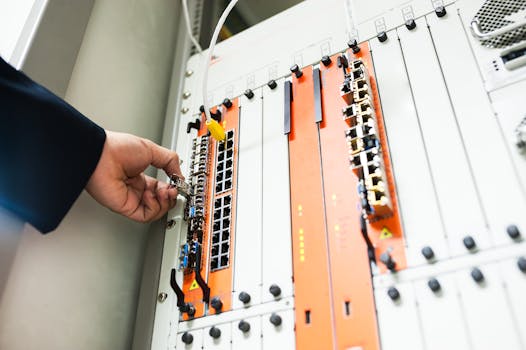From Copper to Fiber: The Revolution of Internet Infrastructure in Africa – Improving Connectivity

From Copper to Fiber: The Revolution of Internet Infrastructure in Africa – Improving Connectivity
From Copper to Fiber: The Revolution of Internet Infrastructure in Africa – Improving Connectivity. The African continent has witnessed tremendous growth in internet penetration over the past decade, with the number of internet users increasing exponentially. However, the existing internet infrastructure, largely based on copper cables, has become a bottleneck in providing high-speed and reliable internet connectivity. To address this challenge, many African countries are investing heavily in fiber optic cables, which offer faster data transfer rates, greater bandwidth, and improved reliability. This shift from copper to fiber is revolutionizing the internet infrastructure in Africa, enabling faster and more widespread connectivity, and paving the way for economic growth, digital inclusion, and social development.
The importance of reliable and high-speed internet connectivity cannot be overstated. It is a critical component of modern economies, facilitating communication, commerce, education, healthcare, and governance. In Africa, where many countries are still in the early stages of economic development, internet connectivity is essential for bridging the digital divide, creating jobs, and stimulating economic growth. The African Union’s Agenda 2063, a blueprint for the continent’s development, recognizes the importance of digital infrastructure in achieving the continent’s economic and social goals.
Challenges of Copper-Based Internet Infrastructure
The existing copper-based internet infrastructure in Africa has several limitations. Copper cables are prone to signal degradation, which results in slower internet speeds over long distances. They are also susceptible to interference from electromagnetic sources, such as power lines and radio frequency signals, which can further reduce their effectiveness. Moreover, copper cables have limited bandwidth, making them unable to support the increasing demand for high-speed internet services, including video streaming, online gaming, and cloud computing.
The limitations of copper-based internet infrastructure have significant economic and social implications. Slow and unreliable internet connectivity hinders the growth of e-commerce, online education, and telemedicine, which are essential for economic development and social inclusion. It also limits the ability of African businesses to compete in the global market, where high-speed internet connectivity is a prerequisite for success.
The Benefits of Fiber Optic Cables
Fiber optic cables offer several advantages over copper cables. They have a much higher bandwidth, supporting faster data transfer rates and greater connectivity. Fiber optic cables are also less prone to signal degradation and interference, ensuring more reliable internet connectivity over long distances. Additionally, fiber optic cables are more secure, as they are difficult to tap and intercept, making them ideal for sensitive applications, such as financial transactions and government communications.
The benefits of fiber optic cables are not limited to their technical advantages. They also have significant economic and social benefits. By providing high-speed and reliable internet connectivity, fiber optic cables can stimulate economic growth, create jobs, and improve living standards. They can also facilitate digital inclusion, enabling more people to access the internet and participate in the digital economy.
Investment in Fiber Optic Cables in Africa
Many African countries are investing heavily in fiber optic cables to improve their internet infrastructure. Governments, telecommunications companies, and international organizations are working together to deploy fiber optic cables across the continent. This investment is driven by the recognition of the critical role that high-speed and reliable internet connectivity plays in economic development and social inclusion.
Some of the notable fiber optic cable projects in Africa include the Eastern Africa Submarine Cable System (EASSy), the West Africa Cable System (WACS), and the Africa Coast to Europe (ACE) cable. These projects have significantly improved internet connectivity in the region, enabling faster and more reliable access to the internet. Other projects, such as the African Continental Backbone, aim to create a comprehensive fiber optic network that spans the entire continent, connecting all African countries and facilitating regional and international communication.
Conclusion
The shift from copper to fiber optic cables is revolutionizing the internet infrastructure in Africa, enabling faster and more widespread connectivity, and paving the way for economic growth, digital inclusion, and social development. The benefits of fiber optic cables, including their high bandwidth, reliability, and security, make them an essential component of modern internet infrastructure. As African countries continue to invest in fiber optic cables, the continent is poised to become a major player in the global digital economy, with all the attendant benefits of improved living standards, job creation, and social inclusion.


